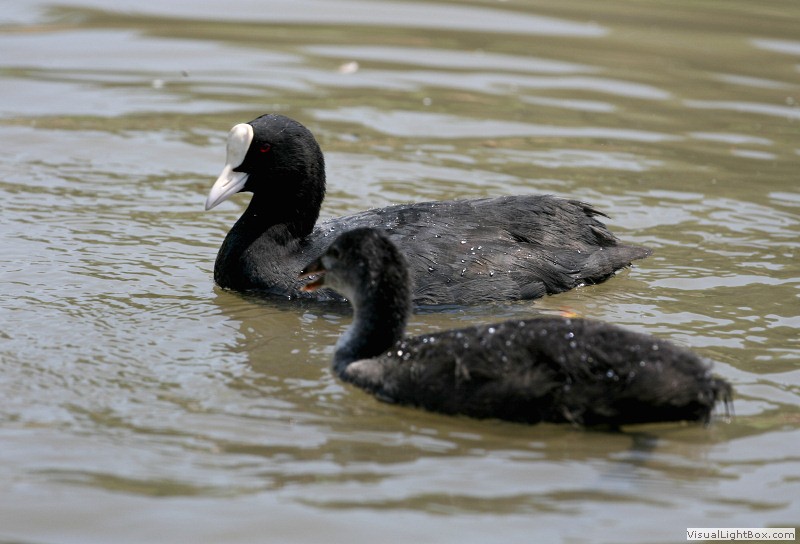The Coot and Moorhen are part of the 'Rallidae' family which also include Rails, and Crakes. They are commonly seen in wetlands alongside Ducks, Geese, and Swans.
Despite the Coot and Moorhen having a different coloured plumage, many people get confused when identifying them. The Coot is black with a distinctive white front face shield and beak, and the Moorhen is brown and black with a distinctive red frontal face shield and beak, tipped with yellow. One way to remember this is that there is no 'R' in Coot but there is in Moorhen, so the Moorhen has a red frontal face shield.
Coot: The Coot has a black-charcoal colour plumage with a distinctive white front face shield and beak. The legs and feet are silver-grey with large lobed toes. Both sexes are alike.
more information.....
Moorhen: The Moorhen has a blackish head, neck, and mantle, reddish-brown eyes, a brown back, slate-grey undersides, with white under the tail, yellow legs and feet, and a distinctive red frontal face shield and beak, tipped with yellow. Both sexes look alike.
more information.....
Notes: Both the Coot and the Moorhen can walk very well and they have long toes that are well adapted to soft uneven surfaces. They are both omnivores, feeding on aquatic plants, small animals, and eggs. They are often seen in shallow vegetated lakes and can both be aggressive during the breeding season.






